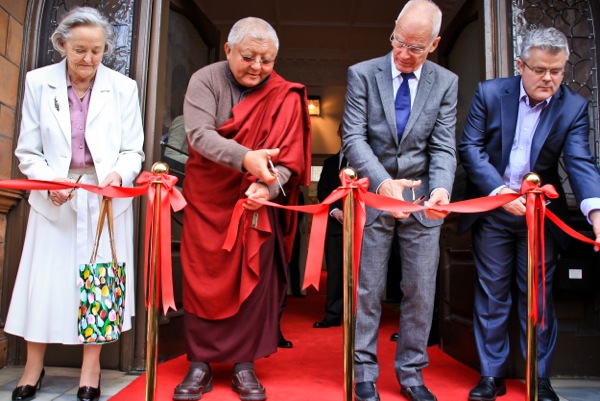
Erica Beaufoy, Jigme Rinpoche, Lama Ole Nydahl and Councillor Paul McGlone, cutting the ribbon to open the London Diamond Way Buddhist Centre at the Beaufoy, 5 April 2014
Saturday 5 April 2014 marked an important day in the history of Buddhism in London and the UK. After over a year of renovation works to prepare the Beaufoy Institute to host a regular programme of meditation and events, the London Diamond Way Buddhist Centre officially opened its doors to the public.
Under bright sunshine, a red carpet was rolled out above the freshly scrubbed steps of the Buddhist centre. Black Prince Road held an eager crowd of visitors who had arrived early. From midday, hundreds of guests streamed in for the ceremony, including many special guests from the local community, interfaith representatives and locally elected councillors. Delegates from other Buddhist organisations attended, including Dechen, the Buddhist Society, ALBA, Buddhist Community Centre UK, the Buddhist Chaplaincy Support Group, and the Lumbini Nepali Buddha Dharma Society. Dr Sunil Kariyakarawana, the Buddhist Chaplain to Her Majesty’s Armed Forces was one of the special guests, and Venerable Simon Gates, Archdeacon of Lambeth, kindly attended on behalf of the Bishop of Southwark.
The guests gathered in the main hall, and were given a tour of the beautifully renovated parts of the Beaufoy, specifically the public areas and smaller meditation hall. The meditation hall exhibited some of the fine pieces of Himalayan Art from the Buddhist centre’s collection and the personal collections of its members, many of which are used as supports for daily meditation practice. After this, all present took their seats in the large marquee, which had been assembled in the centre’s courtyard for the weekend programme of teachings and events.
The speech makers were each introduced by Steve James, co-founder of the London Diamond Way Buddhist Centre. First to take to the stage was Lama Jigme Rinpoche, who is the main representative of the Karma Kagyu school within Europe. Rinpoche was born in Tibet as the nephew of H.H. the 16th Karmapa. He studied in Tsurphu and then Rumtek monasteries, and travelled widely with Karmapa, before being asked to move to the Dordogne in France where he established the meditation centre Dhagpo Kagyu Ling. Steve mentioned that Lama Jigme Rinpoche had played an important part in the efforts of Diamond Way Buddhism to acquire the Beaufoy building: the Buddhist group was new to Lambeth, and had to present itself to the Council during the planning application process. “We were delighted when Rinpoche could come,” said Steve, “and represent the weight and the heritage that we have as a meditation tradition to the Council at the planning application meeting, which as of course you know, had a very successful outcome.”
A Buddhist centre for harmony and development
After warmly greeting everyone present, Jigme Rinpoche expressed his happiness that such a nice place was now available for the Buddhist community in England. His reason for this is, he explained, is because of his profound connection to Lama Ole Nydahl and his late wife Hannah which has endured over the last 40 years, and his appreciation for what they have achieved. Jigmela explained that in the 1960s, together with Hannah and Lama Ole, he received all the transmissions of the Karma Kagyu tradition of Buddhism from H.H. the 16th Karmapa. In 1972, Jigmela continued, H.H. Karmapa asked Lama Ole and Hannah to go back to Europe having spent a lot of time in India, to help people who needed Buddhist values. Jigmela described how Hannah and Ole first helped the younger generation who had problems with drugs and violence, to use Buddhist meditation to change and make their lives proper and dignified. First, he recounted, they did this in Scandinavia, and then when Eastern Europe opened and communism fell, they were invited to Eastern Europe and Russia where they helped thousands of people. Later they were invited to North and South America, where they helped a lot according to people’s spiritual needs.
Jigmela praised the work of Hannah and Ole, because of their capacity to work without any expectation of their own benefit, helping people without caring anything for themselves. Jigmela mentioned that he has seen such examples elsewhere, of individuals who work for others and engage without expecting anything for their own position or benefit. Firstly he gave the example of Mother Teresa in Calcutta, who collected people dying on the street and helped them. He explained that in the beginning, people were a little bit critical of her, but slowly they recognised the job she was doing and she became a very important personality in the world.
Jigme Rinpoche’s second example was from his home country of France, the Catholic priest called Abbé Pierre. Jigmela also mentioned how much he admired this extraordinary personality who helped homeless people, also with the quality of having no expectation for his own position and benefit as a result.
Jigmela explained that since he represents H.H. Karmapa, he often has contact and exchanges with various Buddhist communities. With regard to Diamond Way and the students of Lama Ole, he stated that some are doing very deep practice, while other have just joined and are helping, but all really give up their own comfort and benefit and try to work for society. It’s not only a few, continued Rinpoche, but thousands of very dedicated people, this is the kind of thing Diamond Way centres have done all over the world.
Rinpoche said that for example, just one and a half years ago he came to London and presented to Lambeth Council his support for the Centre’s planning application. At that time, he said, this building was in a very different shape! “So in this short time,” said Jigmela, “there has been a lot of change, and the manpower has been mainly voluntary – individual work by hand to restore the beautiful structure, the tiles, the decorated areas etc. At the beginning there was no heating, hot water, it was very hard, but everybody accepted the task. And not only the people that live in London, but from many different parts of the world came and supported without concern for their own difficulties.” Rinpoche was very pleased with this, and explained that is the reason he fully supports the project.
Finally Rinpoche expressed his strong wish that the London Buddhist centre will be a place for people in London and England to find harmony and peace, to come and to share views and development together.
From Beaufoy School to funding Lambeth schools
Next to take to the stage was Councillor Paul McGlone, Cabinet Member of Lambeth Council for Finance and Resources (Paul has since blogged about his speech at the opening of the Beaufoy Institute on the SE11 Action Team site). He commenced by expressing his great pleasure to be present and how overwhelmed he was by the number of people gathered for the event. He mentioned the saying attributed to Mark Twain, that “History does not repeat itself but it rhymes”, and that this is the sentiment he felt having seen the beautiful Beaufoy building again. “There are many ‘ribbons of history’ that rhyme with this building and Lambeth’s past, its present, and now its future,” he said, and that “Diamond Way is now a part of that”. Paul explained how the lovely red brick façade of the Beaufoy Institute has looked over Black Prince Road for over a century and has always stopped people in their tracks because of its beautiful architecture and artistry. He mentioned how personally fascinated he is by the connection of the building with the progressive Doulton family and the history of Lambeth Doulton pottery and ceramics just nearby. As an example of the fascinating history that links the past, present and future, he referred to the patented Doulton tile system used in the building, and the fact that a member of the Doulton family was one of the original school governors of the Institute. Paul introduced another link to the place and its past: a good friend he had brought with him to the event, Roger Bowdery, who went to school in the Beaufoy Institute 55 years ago!

Councillor Paul McGlone speaking with Erica Beaufoy (the distinctive Cockrill Doulton tiles can be seen on the walls)
Fast-forwarding to more recent times, to Lambeth Council’s involvement, Paul recounted that he came to Lambeth in 2007 as Cabinet lead for Regeneration, then again in 2008 when he held responsibility for Children and Young People. By this time, the Beaufoy building had stood empty for a number of years. Paul explained that there were two propositions, which ultimately did not succeed. First, there was a strong move to turn the Beaufoy building into a museum linked with its ceramics, but this proposition floundered. A more serious proposition, which Paul McGlone led for nearly two years, was to turn the building into an arts and crafts academy with an educational sponsor and the personal involvement of the Prince of Wales. This did not go through for various reasons, but it was very serious, and nearly a deal that was done. But interestingly for Diamond Way, Paul continued, that deal failed and in 2010 after the General Election, as Cabinet minister for Finance, he decided that “as a council sometimes, you have to let go”.

Councillor Steve Morgan (C), who supported Diamond Way’s planning application, together with prospective Prince’s Ward candidates Jo Simpson (R) and David Amos (L)
Paul explained that as the Council could not determine the future of the building, it was decided that others would need to do so. It was placed on the market and Lambeth Council hoped that good parties and good people would come forward, some value would be derived from the land and the building, and the future of the Institute would be assured. And that, said Paul, is indeed what has happened. The proceeds from the whole site (a combination of the Institute building being sold to Diamond Way and an empty plot of land behind it to property developers) derived around £7 million for the Council. This, Paul explained, has allowed a number of things to happen and succeed into the future. The Beaufoy Trust, of which all Lambeth Councillors for nearly 100 years have been Corporate Trustees, was financially endowed with the proceeds from the sale of the property to be used for philanthropic purposes as the Beaufoy family originally intended. Under the leadership of local councillors Steven Morgan, Lorna Campbell and Mark Harrison, who wanted the local community to also gain some benefit, those proceeds also allowed some £600,000 from the Section 106 obligations to enable local projects around the Durning Library, Lollard Street Adventure Playground, re-landscaping Coverley Point, and greening of Tyers Street. Importantly, as the political lead, Paul made a decision that the underlying proceeds of nearly £6 million were directly ring-fenced and are now being spent on building new schools in the borough for Lambeth’s young people, for now into the future, which is an amazing outcome from letting go.
But principally, Paul continued, the people gathered for the event were present because Diamond Way acquired the building, and it has been converted into the London Diamond Way Buddhist Centre, and the Beaufoy Institute building now has a new lease of life, with all those positive outcomes.
“It wasn’t without difficulties,” Paul recalled. In reference to earlier comments about the Planning Committee, Paul stated that this was an “eye-opener” for him, and as is often the case, he had to handle an enormous amount behind the scenes. But the positive outcome, he continued, because Lambeth Planning Committee approved it, is that Diamond Way Buddhism now own the Centre, and it is now what it is. Paul stated that he knows that Diamond Way will work with the local community, which always wanted to have some involvement with the building, and that he was very pleased with that. He also mentioned that he was equally pleased that as an organisation, Diamond Way Buddhism is working with Faiths Together in Lambeth, a borough-wide independent interfaith organisation that fosters constructive relationships among religious communities and promotes interfaith involvement in civic life in Lambeth.
Concluding his speech, Paul expressed his thanks and aspiration that “with all the best wishes in the world, this centre will always be a place of peace, contemplation and learning.”
The Beaufoy lineage
Next to give a speech was Erica Nadin-Snelling (née Beaufoy). Before introducing Erica, Steve James drew attention to the importance of lineage, in the transmission of Buddhism from generation to generation since the time of the Buddha. Steve then drew a historical comparison between the Kagyu lineage and the family lineage of the Beaufoys. Specifically how Tilopa, the founding father of the Kagyu lineage, passed away in 1069, around the time of the Norman conquest of England, and how the Beaufoy family can also trace its line to this time.
Having taken to the stage, Erica first expressed how overwhelmed she was by the occasion, and then joked that the Beaufoys predated the Kagyu lineage slightly, because in 1068, one year earlier, William de Beaufoy was made Bishop of Thetford! Erica then explained the origin of the name Beaufoy was actually “Beaufawe”, the old French for Beech trees. It really means “Beautiful Beeches”, which was actually the name of an estate in Normandy, below Pont l’Evêque, that the Vikings claimed. These Vikings were related on the female side, through marriage to a cousin of William de Beaufoy and Duke Richard, and so in turn were appointed Bishops once they became Catholic and ventured over with the Conquest. Roger was one of the names coming over, and Erica mentioned that sitting in the audience was also a slightly younger Norman Viking, Roger Beaufoy! After the conquest, Erica continued, the Beaufoys had estates in various parts of the country, William not wishing to build a power base anywhere, and eventually went up to Warwickshire where they held land as a feudal barony. The title ran out, but the Beaufoys were quickly knighted again by King James on his way to build support, and subsequently by Charles II. Sir Thomas Beaufoy was knighted in the bedchamber, which apparently was quite a common occurrence in those days.
Erica continued the story, explaining that the Beaufoys then ran out of heirs, something that she finds, unfortunately, seems to be happening a lot. As such, the estates people had to get out and go to work. One of the things they were doing in Warwickshire since 1440 was producing corn seed oil, and so Mark Beaufoy travelled to Bristol, then over to Holland to learn how to manufacture vinegar. He came back to Lambeth, which at the time was a lovely, gorgeous, tree-lined area. Erica mentioned that there are some photographs, which are being reproduced for the Centre to show how lovely it was. The Beaufoys set up a very successful business in Lambeth, and many of them had become Quakers, explained Erica. Like a lot of the great Quaker families such as the Cadburys and the Rowntrees, having the Quaker ethos the Beaufoys made money, provided work, and shared it with everybody. This enabled some of the family’s sons to practice and follow their interests. Henry Beaufoy felt very strongly about the slave trade and the Corn Laws and wanted to get into Parliament. This however meant that he had to give up being a Quaker, because as a Quaker he wouldn’t be allowed to stand for a seat in Parliament. Once in Parliament he spoke at great length against the Corn Laws and slavery. Erica explained how Henry visited a slave ship in the Thames just to see how terrible the conditions really were.
Erica spoke of a number of Beaufoy family paintings by the famous portrait artist Thomas Gainsborough. He made a portrait of Henry Beaufoy, which is still in the UK with the cousins of the Beaufoy family. Another Gainsborough painting, of Henry’s wife Elizabeth, resides in the Huntingdon Museum in California. Gainsborough also painted Mark Beaufoy, but this portrait was destroyed during the Blitz, around the same time the Beaufoy brewery was destroyed and George Maurice Beaufoy was killed, who unfortunately left no heirs as he married late in life. This particular branch of the Beaufoy family therefore came to an end.
Erica referred to another interesting Beaufoy called Mark, who became a fellow of the Royal Society because of his important astronomical observations. He lived on the continent for a few years and was the first Englishman to climb Mont Blanc. Together with his son Henry, he tried to alleviate the terrible poverty in Lambeth. They started the Beaufoy Institute, the Lambeth Ragged School, and also the railway arches where the waifs and strays were treated. Henry, Erica said, was a very shy man. He didn’t like any publicity or any fuss, which Erica observed is rather characteristic of most of the male Beaufoys she has met. Erica commented that it’s their wives and daughters that have to do a bit of pushing for them! Because Henry and his wife adored children but had none of their own, he devoted his whole life and spent all his money looking after others. As well as creating the Institute, he restored the fortunes of the City of London School, to which he donated £10,000 (which must be equivalent to £10 Million today). To this day the City of London School still hold an annual “Beaufoy Day” and awards a Beaufoy Medal for a scholarship to Cambridge for mathematics. Unfortunately, the Blitz came and ended the actual Foundations.
Bringing the history of the Beaufoys closer to today’s date, Erica mentioned two events in 1930. Firstly her own birth! In response to the roar of applause, Erica insisted the audience not to clap, because she “was entirely the wrong sex!”. She joked that her parents quickly added an “a” onto “Eric” so she became Erica! This brought forth a letter from a Gwendolyn Beaufoy, who was a cousin of the Beaufoy family from the Brewery era. She was writing a history of the family, because her husband had inherited the archives, back to the family’s very origins. Gwendolyn wanted to know the exact relationship of Erica’s branch of the family. Gwendolyn Beaufoy published a book entitled “Leaves From a Beech Tree”, which has given Erica’s family the benefit of a pretty full history, which since that time has been enlarged due to later research by many others. Because “Leaves From a Beech Tree” was published privately, it is very hard to find copies. However, due to the help of her elder daughter Deborah, who ha done a great deal of research for her, Erica had managed to find a copy to present to Diamond Way Buddhism for the benefit of the Institute!
Later on, Erica mentioned what a wonderful occasion the event was, and that “the Institute must have given a sigh of relief when the Diamond Way came to her rescue… I have never encountered so many joyous happy young people!”
The view of Diamond Way Buddhism
The final speech of the day was given by Lama Ole Nydahl. Lama Ole started by sharing the story of when he and his late wife Hannah started travelling and teaching Buddhism. He explained that after spending four years from 1968 in the Himalayas with many teachers, above all the 16th Karmapa, at certain time in 1972, Karmapa asked them to go home and teach Buddhism. Hannah and Ole’s first reaction was to ask “where’s home?” because they had been away so long. Karmapa said “home to Europe, where you came from”. Once back in Europe, they were waiting for the visit of Kalu Rinpoche. He was the main teacher from whom they had received the so-called “Ngondro”, or preparatory practices of Tibetan Buddhism, which Lama Ole summarised as: 100,000 “belly-flops”, sliding out one’s full length (called “prostrations”); 100,000 100-syllable repetitions where all the negativity one can remember or is reminded of is washed out and disappears; creating wonderful universes full of bliss and beauty and offering them up for everybody; and finally establishing one’s bond with the teachers of the lineage one is in.
Kalu Rinpoche was in a place called Sonada near Darjeeling, and was supposed to come to Europe, but came a year late! During that time, Lama Ole explained, he and Hannah hadn’t thought of themselves as teachers. They expected Tibetans to teach and didn’t have the idea that anybody else would do so. In the year before Kalu Rinpoche arrived, they travelled around with a photo slide-show of their time in the Himalayas and talked about their Buddhist teachers and what they had done. Once, Lama Ole continued, they had been driving a Swedish car in Denmark and had parked it somewhere that had prompted the local police to want to talk to them. Lama Ole was showing the slides to an audience and as he didn’t really want to speak with the police, he decided to make it into a very long lecture, so he had to start explaining things. The police thought that as it was a religious meeting they couldn’t really interrupt, so they stood there “with their big boots getting warmer and warmer” until they couldn’t stay any longer and just left! Lama Ole said that after this, it “sort of became a habit”.
In relation to his continuing work, Lama Ole explained that today he travels with Tomek Lehnert, who he described as “the functioning part of my mind” as well as his partner Alessandra, who Lama Ole praised as having the kindness to accompany him, referring to himself as “the kind who cannot really sleep alone”. Lama Ole then went on to express his thankfulness to his late wife Hannah, mentioning the film recently made about her which had been shown at a private screening for cast, crew & sponsors two days previously. Lama Ole said that the film shows what an incredible woman Hannah was, and the work they did together. “There are so many taboos about death,” said Lama Ole, “so I think I’ll tell a bit about how she died”.
“Actually, she was eaten up by cancer. She had 30 times the deadly dose of morphine every day to be able to keep working and not have to think of her pain and so on. And I remember then in the middle of the night on the 1st of April [2007], I was holding her in my arms. There were three very skilled Buddhist doctors there, and they actually noticed something that probably only happens if people can really meditate. My wife died 15 times. 15 times she was totally, absolutely dead for more than a minute. No heartbeat, no anything. Then it was as if she thought “maybe I can be useful again or do something” and she was back again. I held her all the time, and in the end, on the 16th time she came back I said, “Hannah, you’re not enjoying this, you go now.” Then I gave that which is called Phowa, where you send somebody’s mind to the energy field of the red Buddha Amitabha (Limitless Light), and she went. Then she lay in my arms in the night and cooled out, and the next morning when we put her into the coffin, she looked like she’d eaten something totally delicious – totally blissed out. That was so nice. So, that was what she was and what she did.”
Lama Ole recalled that Hannah’s qualities of communication, of talking and being close to everybody, was first noticed in 1972 and then ’73 when Kalu Rinpoche came to Europe. They had already started quite a few groups that were waiting for Kalu Rinpoche. When he came, Hannah and Ole took him to the different small groups down to Northern Italy and France and also into Holland and Belgium. “A group at that time was basically 10 hippies and a dog”, said Lama Ole, “that’s how it all started”. Lama Ole described Kalu Rinpoche as a “very, very wise man” and recalled that every time he would say exactly the same thing: “We can give people money and food and help them for a while. We can give them an education and help them for one life – to be together with more intelligent people and earn more money in less time – but that stops at the grave. But if we show people, and give them methods to experience, that what’s looking through their eyes and listening through their ears right now is indestructible, radiant clear light – if we give them a mirror for seeing their own minds – we can help them for life, for death, for what comes after death, and into all future lives.”
“And that,” explained Lama Ole, “is what we’re trying to do here in our nearly 700 Karma Kagyu centres around the world: to give people that mirror where they see themselves without fear, knowing that mind is essentially space and cannot be destroyed or harmed. And at the same time also experiencing – which one does more and more when one meditates – that space is essentially bliss.”
Lama Ole stated that there are three different ways to understand space. Firstly, there’s the Dalai Lama’s school, the Gelugpas or “Yellow Hats”, one can say the government of Tibet, who use the Tibetan word “Rangtong” (emptiness of self-nature). “Tong” means empty, that there’s no essence. This is also what is being proven in CERN, that form is emptiness and emptiness is form, form and emptiness cannot be separated, as Buddhas said. The Rangtong teachings, Lama Ole continued, are probably very good in big monasteries full of young people who live as monks, “to give them something to debate about so that they don’t start pushing each other around.” But the Tibetan lineages that are more involved with human life, with understanding of a more total existence, especially in the three old schools, (the Nyingma, Sakya and Kagyu), use another term, “Shentong” (empty of other). “Shen”, Lama Ole explained, alludes to something more; the consciousness of the fact that it is empty. It is understood that phenomena are empty of any own nature or own existence, that everything is a collection of conditions coming together, changing and disappearing again. Lama Ole said, “there’s a bit more blood in that version, a bit more feeling and push”.
“But the power of our lineage,” he continued, “lies in the fact that we got the teaching from the 16th Karmapa”, gesturing to the large portrait behind him. “I can tell you when he held that hat, that Black Crown on the top of his head, it was seen as the natural emanation of his energy field and of all the Karmapas. When people saw this, they were really touched.” It is his school, the Karma Kagyu school as practiced today, Lama Ole said, which uses another Tibetan term, again containing the word “Tong” (things are empty): “Detong”. “De” comes from “dewa”, meaning bliss. This realisation is an explosion of bliss, power and meaning. Space is not a black hole, and not just something that knows: the experience of space, the opening up of the inner channels in human beings, and all the power which is there, this in its essence, is greatest bliss.”
This, said Lama Ole, is what the 16th Karmapa shared, and it is the view one will find in our Karma Kagyu centres. “I hope I wasn’t missionarizing, I was just telling you, right,” said Lama Ole, “this is how it is, and really that’s why we grow… This view that space is joy makes us able to open up and to get a lot of blessing out of space, a lot of good things, a lot of happiness appears. So, thank you all!”
Opening the Buddhist Centre
After a huge round of applause for the four speakers, everyone left the marquee and gathered in Black Prince Road outside the centre, where they each tied a string in one of the five wisdom colours to the railings of the Beaufoy Institute, while making their wishes for the successful activity of the Buddhist Centre and the ultimate happiness of all beings. After this, the four distinguished guests stood in the Centre’s main entrance to cut the ribbon, declaring the London Diamond Way Buddhist Centre officially open!
In a very touching email that arrived after the event, one of our interfaith colleagues said:
“Thank you very much indeed for having us share in the splendid opening ceremony today of Diamond Way Buddhist Centre. It was for me a blessing and a privilege in so many ways… I learnt much of the rich values of Diamond Way which is so relevant to today’s society the world over. Your new home the Beaufoy is an education in itself and proof of the force and durability of the Diamond Way values of service to others and the community at large.”
Other posts which may be of interest :
Tags: Beaufoy Institute, Beaufoy School, Black Prince Road, Diamond Way Buddhism Lambeth, London Buddhist Centre, Planning application, Planning Consultation
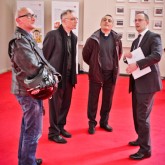
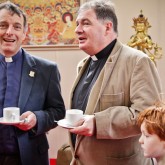
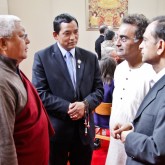
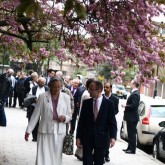
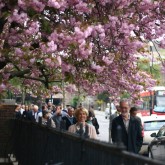
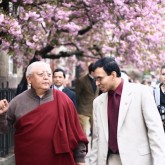
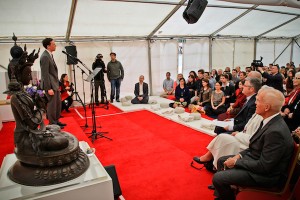
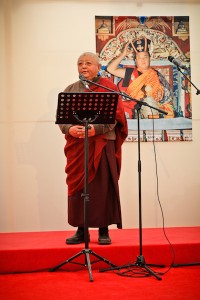
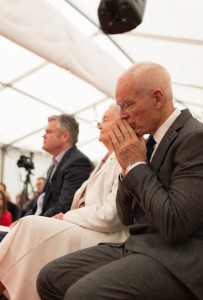
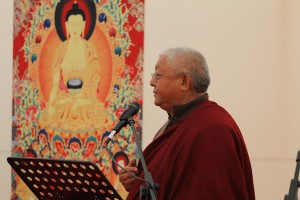
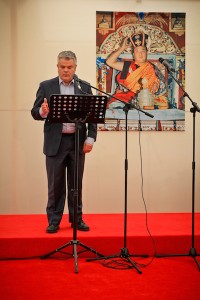
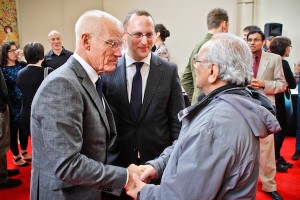
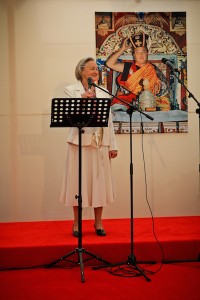
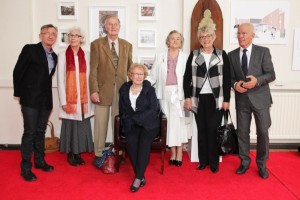
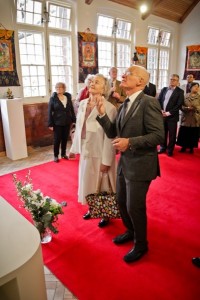
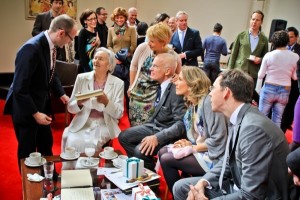
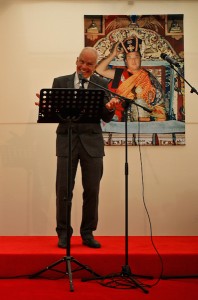
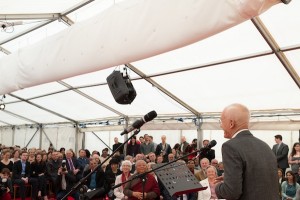
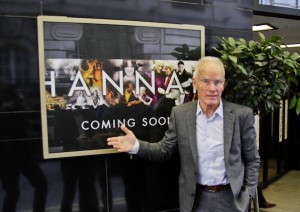



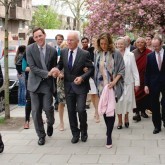
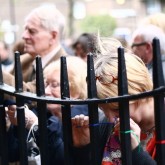


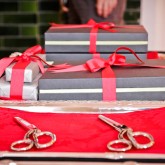
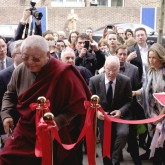

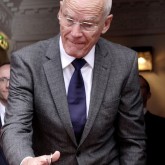


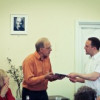
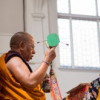
 Follow
Follow